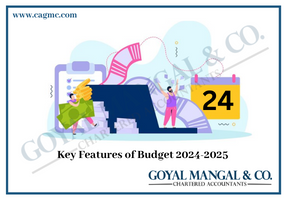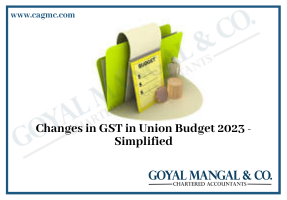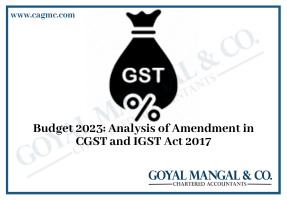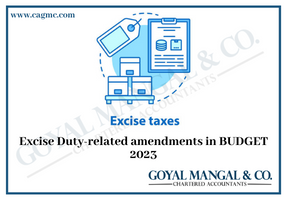
Union Finance Minister Nirmala Sitharaman will unveil the Union Budget 2022-23 in Parliament on Tuesday .The Budget, which is Sitharaman’s fourth in a row, is being presented as India recovering from the third wave of Covid-19. It also comes at a time when hundreds of thousands of young people around the country are protesting against high unemployment rates. In other states, like Uttar Pradesh and Punjab, the budget is being delivered just days before legislative Assembly elections.
The Economic Survey, which was tabled in Parliament on Monday, focused on the post-pandemic recovery, highlighting the government’s budgetary space, and examining a variety of factors like inflation, energy costs, and global uncertainty. The Survey, which is the current year’s economic report card, predicted a modest 8-8.5 percent growth rate.
PLI would be given Rs 19,500 crore in the budget to manufacture high-efficiency solar modules.
PLI would be given an additional Rs 19,500 crore in the Budget to manufacture high-efficiency solar modules, with a focus on fully integrating the manufacturing of diverse components.
Impact: This is a step toward having 280 GW of solar capacity installed by 2030.
The amount spent on public capital expenditure increased by 35.4 percent to Rs 7.50 lakh crore.
In 2022-23, the budget for public capital spending has been increased by 35.4 percent, from Rs 5.54 lakh crore to Rs 7.50 lakh crore. This expenditure will amount to 2.9 percent of GDP.
Impact: The government believes that public investment is required to encourage private investment, which in turn will generate demand. Private investment continues to lag.
8 ropeway projects to ease congestion in hilly areas, push tourism
The Parvat Mala announcement with 8 ropeway projects in 2022–23. This will ease transport linked congestion in hilly areas and push tourism.
Capital expenditures have been increased, yet there is anxiety about the ability to spend.
The Union Budget allocated Rs 7.5 lakh crore for capital spending in 2022-23, up from Rs 5.5 lakh crore in 2021-22. Given the low level of private sector investment, the government hopes that its continued focus on increasing public capital spending will encourage private sector investment. The ability to spend, on the other hand, is a source of concern. According to CGA data, the Centre’s capital spending has not increased at the expected rate in the current fiscal year.
Budget proposes a Digital Rupee based on blockchain
The budget recommends that RBI issue a Digital Rupee based on blockchain and other technology beginning in 2022-23.
Impact: The introduction of a central bank digital currency will help to strengthen the digital economy, and the government will put out a comprehensive plan to create a public digital currency.
The Ujjwala scheme has been expanded to include one crore more households.
The Ujjwala scheme, which aims to provide clean cooking fuel to underprivileged households through LPG connections, would be expanded to one crore more people, according to FM.
Impact: The Ujjwala scheme has already connected 8 crore families to LPG. In the short term, rising LPG prices in accordance with worldwide fuel prices, combined with the removal of subsidies on LPG cylinders, could diminish the impact of LPG connections.
Capital expenditures have been increased, yet there is anxiety about the ability to spend.
The government has declared that an independent system operator for natural gas transmission capacity booking and coordination will be established to ensure unbiased natural gas transportation capacity allocation.
Impact: The announcement, which was also made in the last Budget, aims to address concerns about bias in the allocation of gas transportation capacity by companies like GAIL participating in natural gas transportation.
The Fiscal Deficit is Expected to be 6.9%, according to Nirmala Sitharaman.
Given the government’s increased pledged expenditure allocations over and beyond last year’s Budget estimates, there were concerns that the government’s fiscal deficit objective would be missed. However, the Finance Minister has declared just a minor reversal: the fiscal deficit is expected to be 6.9% of GDP in 20221-22, compared to a target of 6.8%. The Centre has set a target of bringing its deficit down to 6.4 percent next year, in keeping with the glide path of consolidation.
Economic Survey: The Indian Economy’s Major Challenges and Concerns.
Despite a projected 9.2% GDP growth in FY22, the Indian economy continues to face a slew of structural challenges that existed prior to the pandemic, as well as new challenges brought on by Covid-19. The most significant headwind is inflation. Inflation has risen as a result of supply chain interruptions and weak economic development, according to the survey. Capital flows into the country are likely to be affected by the withdrawal of stimulus in developed countries in the coming fiscal year.
Railways: 400 energy-efficient Vande Bharat trains on track in Budget 2022.
In the next three years, India will produce 400 new, energy-efficient Vande Bharat trains, according to Finance Minister Nirmala Sitharaman. Aside from that, she said, the rail industry would establish “One Station One Product,” which will leverage local produce carried on the rails. Trains will also roll out postal railways for parcel carriage, offering a boost to a new business field, as part of their new product launch.
Sitharaman Recommends a 14 percent increase in the Tax deduction ceiling for employees.
Nirmala Sitharaman advocated that the tax deduction limit for both Centre and state government employees be extended from 10% to 14% in order to support state government employees with their social security benefits and bring them on par with Central government employees.
She added, “Corporate surcharge to be reduced from 12% to 7%. I propose to provide that any income from transfer of any virtual digital asset shall be taxed at the rate of 30%. No deduction in respect of any expenditure or allowance shall be allowed while computing such income, except cost of acquisition.”
Transfers of Digital Assets Will Be Taxed at a rate of 30%.
Union Finance Minister Nirmala Sithraman said on Tuesday that earnings from cryptocurrency investments will be taxed at 30%, putting an end to the ambiguity surrounding the taxation of such gains. Bitcoin, the most well-known cryptocurrency, was trading higher. Losses incurred as a result of such investments, however, will not be allowed to be offset. This will offer investors in various cryptocurrencies with much-needed clarification. The government has previously announced the launch of a digital rupee based on blockchain technology.
NFT, as well as Cryptocurrency, is subject to taxation.
Virtual assets would be taxed at a rate of 30%, according to the Budget. Finance Minister Nirmala Sitharaman stated that it cannot be used to replace any other source of income, and that a 1% TDS will be added to payments made using digital assets in order to maintain track of transactions.
Impact: This action would legally bring virtual assets like cryptocurrencies and non-fungible tokens into the tax net, allowing the government to recognise them. The government’s proposals to outlaw private cryptocurrency are still in the works.
Surcharge on Unlisted Shares is Reduced From 28.5 percent to 23 percent.
The Finance Minister announced a reduction in the surcharge on unlisted shares from 28.5 percent to 23 percent, which will make it easier for entrepreneurs and unicorns to exit.
Impact: Investor exits and investment churn are expected to be facilitated as a result of this.
IT Returns Can Now Be Changed For Omissions and Errors, According to the Government.
Tax returns can now be revised for omissions and errors, including claimed income that was not reported. Changes can be made during a one-time window that lasts until two years after the end of the assessment year when the tax is paid.
A 15% surcharge on the transfer of any long-term capital gains has been imposed.
The minimum alternate tax rate for cooperatives has been decreased to 18.5 percent, bringing it in line with the rate for corporations. In addition, for total income ranging from Rs1 to Rs10 crore, the surcharge for cooperatives has been decreased to 7% from 12%.
The new company tax regime’s benefit deadlines were also extended in the Budget.The government had previously announced a 15% corporate tax rate for newly formed manufacturing businesses until March 31, 2023, which has now been extended until March 31, 2024.The deadline for entrepreneurs to incorporate in order to receive tax benefits has been extended by a year, to March 31, 2023.
Conclusion
According to my point of view, this Union Budget 2022-23 by Finance Minister Nirmala Sitharaman is best for the country as per the condition of the country and taking under consideration the situation of the COVID-19.







